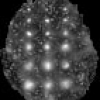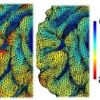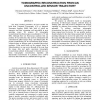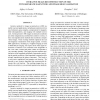ISBI
2004
IEEE
15 years 7 days ago
2004
IEEE
Three-dimensional rotational angiography (3D-RA) is a relatively new and promising technique for imaging blood vessels. In this paper, we propose a novel 3D-RA vascular segmentati...
ISBI
2004
IEEE
15 years 7 days ago
2004
IEEE
The models used for analyzing functional MRI (fMRI) data have profound impact on the detection of active brain areas. In this paper temporal and spatial linear subspace models for...
ISBI
2004
IEEE
15 years 7 days ago
2004
IEEE
Surface data such as the segmented cortical surface of the human brain plays an important role in medical imaging. To increase the signal-to-noise ratio for data residing on the b...
ISBI
2004
IEEE
15 years 7 days ago
2004
IEEE
We propose to segment volumetric brain structures with a level set method including a fuzzy decision in the design of the evolution force. The role of fuzzy logic is to fuse gradi...
ISBI
2004
IEEE
15 years 7 days ago
2004
IEEE
ISBI
2004
IEEE
15 years 7 days ago
2004
IEEE
For many medical procedures 3D bone models are built from Computed Tomography (CT) or Magnetic Resonance Imaging (MRI) data, both of which are expensive and time consuming, and un...
ISBI
2004
IEEE
15 years 7 days ago
2004
IEEE
Microscopy imaging often suffers from limited depth-offocus. However, the specimen can be `optically sectioned' by moving the object along the optical axis; different areas a...
ISBI
2004
IEEE
15 years 7 days ago
2004
IEEE
ISBI
2004
IEEE
15 years 7 days ago
2004
IEEE
Iterative methods for image reconstruction in MRI are useful in several applications, including reconstruction from non-Cartesian k-space samples, compensation for magnetic field ...
ISBI
2004
IEEE
15 years 7 days ago
2004
IEEE
In this paper, we introduce the use of nonlinear dimension reduction for the analysis of functional neuroimaging datasets. Using a Laplacian Embedding approach, we show the power ...




